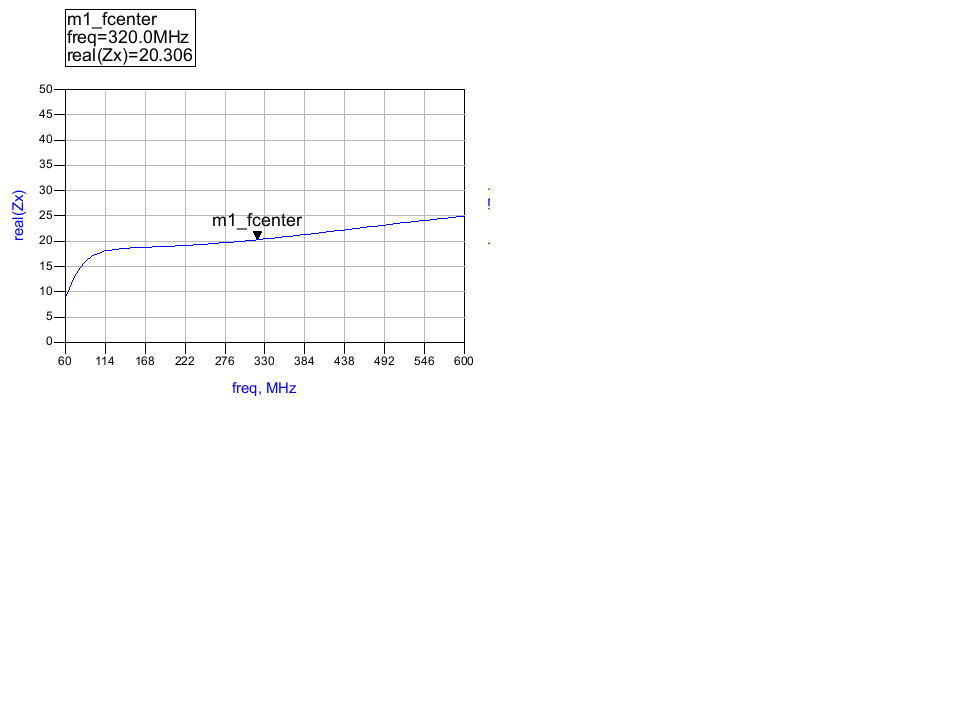Need Comments on Input Return loss for a Broadband PA
Some spec details before you look into the results.
LDMOS power transistor (unmatched), Frequency range- 100-600MHz (BW- 500MHz), Vdd-50V, Pout =~400W.
Those curves tell me nothing...
Please explain your case,target,system.circuit etc. clearly and detailed.
Hi Big Boss,
Ok So as said earlier the operating frequency range is 100-600MHz. I am using a push pull configuration So I designed a balun which ideally transforms 50-25ohms. So in this case the transformation ratio is approximately from 25 to 1.2 ohms(@470MHz from loadpull data) which is the transistor's input impedance.
So the figures above corresponds only to the input matching.
So usually a -10 dB or better than that return loss is considered as a good match, but since my BW is approximately 120% it's very difficult to maintain a -10 dB RL throughout So I decided just to match well at the highest Frequency and at lower frequencies since the amplifier has a good gain it won't matter much. That is my assumption. So does my assumption makes sense ?
So your target is to match the input during whole bandwidth.
What kind of Balun-transofmer you have designed? If you designed-for instance- coaxial Balun ( or equivalent Microstripline) transformer, it won't absolutely work because these kind of Baluns-transofmers have relatively narrow bandwidth.
Instead, you must try ferrite cored wideband transformer to match the input.
L-C Baluns won't also work because they work at single frequency too.
You may also coaxial-ferrite combination too.For more information seek amateur radio sites.They have very good practical examples.
Note : The input impedance of the transistor is 1.2 Ohm in according to Loadpull ? It's really weird.I have never seen such low input impedance...
I have designed a coaxial balun transformer. The simulation results shows the real part is somewhat varying from 15-25ohms throughout the bandwidth. But I will have to try ferrite cored transformer.
Yes, the peak power of this device @3dB is around 700W. So I am not surprised it's impedances are so low. These days at high powers we do have such impedances.
EDIT :
For more an input impedance you can refer to nxp's BLF174 XR series.
Result of a coxial Balun design.

- Different Input/Output matching
- How do you choose input power while doing loadpull?
- Why an input inductor required in all GPS LNA?
- Input and output impedance matching in Distributed amplifier
- In distributed amplifiers, is it total input capacitance of the gain stage or Cgs
- curve fitting for input and output matching
